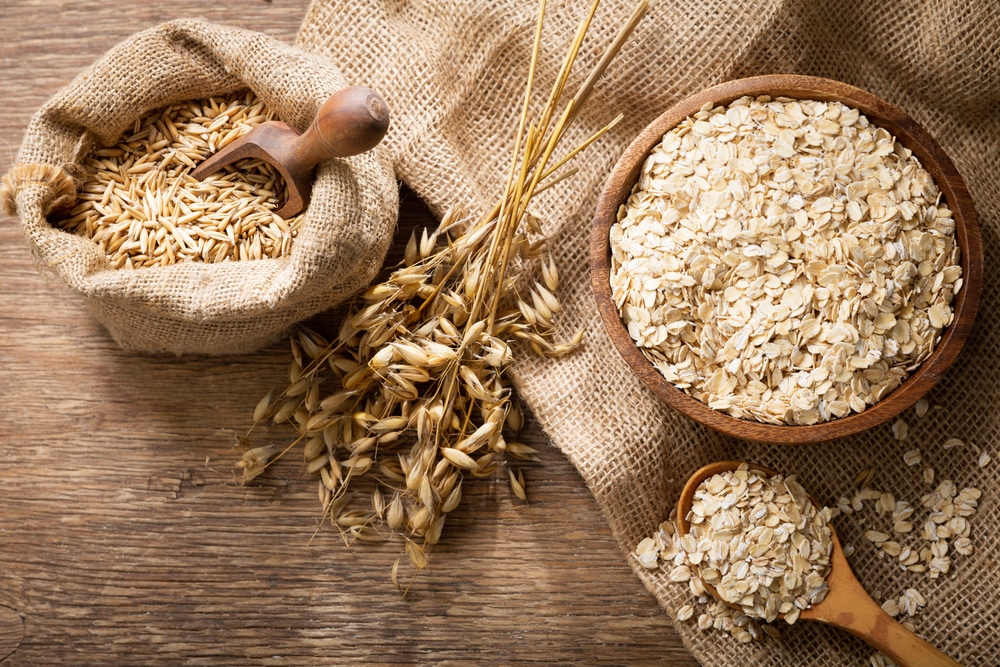
Oat is one of the healthiest grains out there. Ranging from breakfasts to dinner and making some healthy drinks, oats are widely consumed by people who follow a healthy and active lifestyle. In fact, there are different forms of oats available, including colloidal oatmeal vs. oat flour. So, if you want to incorporate oats into your eating routine, let’s check out the differences between these two!
Colloidal Oatmeal vs. Oat Flour
Oat Flour
As the name suggests, the oat flour is made by grinding the oats into powdered form, and it’s actually the most nutritious flour out there. This is a whole grain flour that’s known for the tender crumbs and slightly nutty flavor. The best thing about oat flour is that it’s free from gluten, but it varies with the brands as some brands use gluten-based oats to make the flour, which is why it’s recommended to read the packaging label.
The oat flour is widely used in baked goods recipes. As far as making the oat flour is concerned, it’s pretty easy as you need to pour fresh oats into the food processor or blender to turn oats into fine powder. The oats are blended until you achieve the flour texture. You can use whichever oats you want, ranging from steel-cut oats to quick-cooking oats and rolled oats. However, if you opt for steel-cut oats, they will need more processing/blending as they are dense. Similarly, blending the same amount of steel-cut oats as other oats will yield 2x more flour.
The pat flour is a great choice for making healthy waffles and pancakes but make sure you let the batter rest for at least ten minutes before using them – it helps with hydration, resulting in the evenly-mixed and thicker batter. Keep in mind that the oats can be cross-contaminated, which is why you must purchase certified and gluten-free oats from the supermarket if you want pure and gluten-free oat flour. Still, it’s recommended that you consult the doctor/nutritionist before consuming oat flour because it can be challenging to digest for many.
If the oat flour is used on its own, it won’t hold or rise, which is why it must be mixed with other flours if you have to bake. Once baked, it adds a rich and nutty flavor to the food. In addition to baking recipes, the oat flour has a high nutritious value, which makes it suitable for various recipes. All in all, it can be used for baked sweets and muffins, especially if you like the chewy texture.
Colloidal Oatmeal
The colloidal oatmeal is made by grinding or processing the oat kernels and is made into a fine powder that’s mixed with water to make dough. The colloidal oatmeal powder is widely used in cleansers, bath soaks, body washes, and lotions, in addition to cooking applications. It has a white appearance, which lightens the color of your baking items as well. It has anti-inflammatory properties, which is why many people with wounds have seen improvement by consuming it.
Before we move forward, it’s important to add that people with oat allergies should not consume colloidal oatmeal in any case. Since it has a fine texture, the particle size ranges from 20 µm to 50 µm. The colloidal oatmeal flour is loaded with fiber and is a great source of carbs for people. It’s obvious that it’s used for beauty and cosmetic purposes, but it’s also suitable for baking, such as for cookies.
On top of everything, it can be used in place of all-purpose flour in baked desserts. As far as the nutritional profile is concerned, it is loaded with dietary fiber, bioactive components, and phytochemicals. Moreover, it has zinc, copper, magnesium, folate, thiamin, and iron. Lastly, it’s an abundant source of potassium and has minimal sodium, making it a healthier choice.
It has a high protein content, which is why it can be used to make healthy bread, cookies, biscuits, baby food, and granola bars. The best thing about colloidal oatmeal flour is that it has antioxidants, which is why it can be used as a food extender, emulsifier, and stabilizer. Last but not least, it’s quite easy to find in the supermarkets, but you can always blend your own oat kernels!
